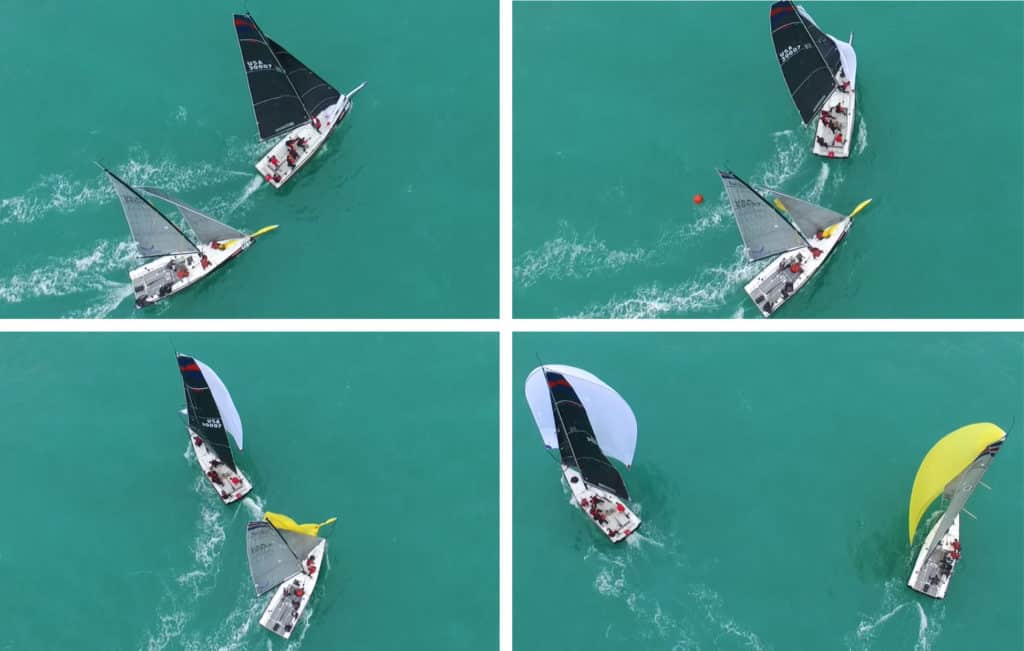
Sometimes the right images appears before our eyes and help us understand how to make a hard maneuver feel easy. That’s how I felt when I saw these four great shots of two C&C-30s rounding a weather mark. One does a standard set, with the goal of staying on starboard tack after the mark rounding. The other does a jibe-set, often referred to as a “Zambuka”. Each does a great job, and it’s worth looking at the reasons why.
The first thing I see is how the lead boat protects the low road on the offset leg, knowing that they want to turn left at the mark to get onto port jibe. Sailing a lower angle shuts out any trailing boats at the zone and guarantees the ability to legally maneuver at the mark. From a boathandling perspective, the leader has pre-fed the clew of the gennaker around the headstay to help it set easily when hoisted. Many teams like to do this, but it’s not necessary if the jib is handled properly during the maneuver.
Both boats have their gennaker tacks pulled out to the ends of their poles. This helps spread the sail out for the hoist, but comes with some risk. If this part of the sail isn’t controlled, it can fall in the water and cause a trawl. Your bow team needs to understand and manage the risk, which differs from boat to boat depending on the way your foredeck work area is configured and whether or not your boat has lifelines.
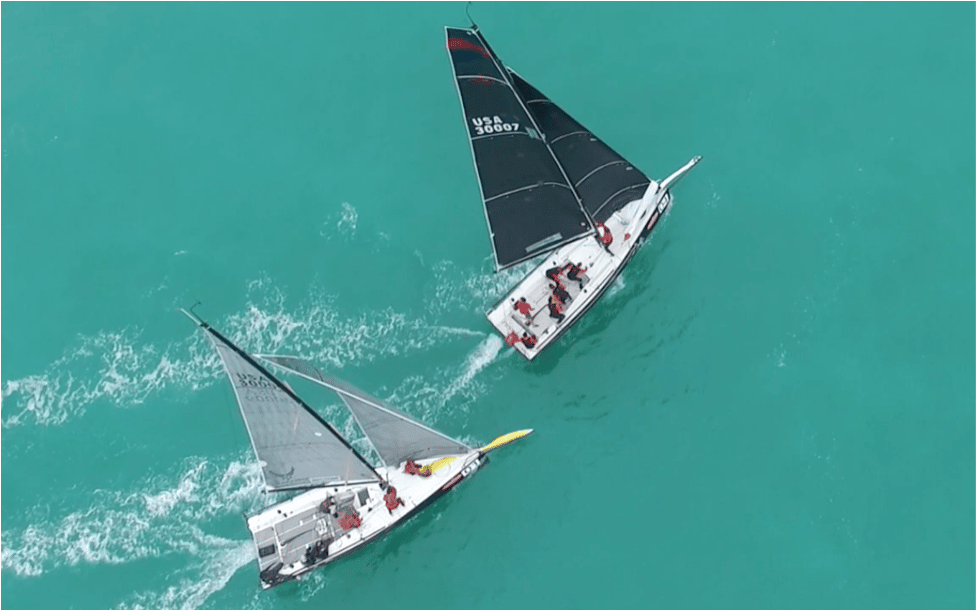
As each boat bears away to hoist, the crew pulls the jib in close to centerline to allow the gennaker to go up easier and, if doing a jibing set, helps keep the light, downwind sail from blowing through the foretriangle during the jibe (photo 1).
The lead boat does a great job of turning slowly as the gennaker is hoisted. Too fast of a turn makes the sail try and blow through the foretriangle and increases the chances that it will fill before it’s up all the way. Slower is better, allowing the kite to be hoisted, and then the sheet eased as you come up to the final exit angle.
On the trailing boat, a smooth downturn also helps the helmsman find the exit angle and the trimmer fill the kite. Sail low enough to take away most of the heel, but still high enough that the sail will blow away from the rig and fill, once up.
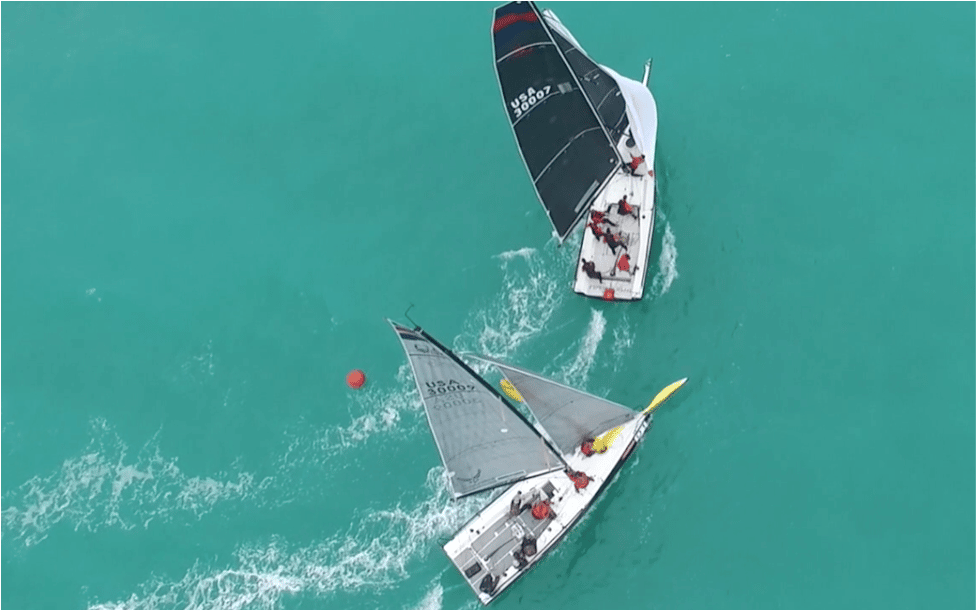
Note that the leader started this process about a half a length ahead, and is now giving up distance to the trailing boat. The distance lost from this maneuver is part of the risk/reward calculation that the tactician makes before making this tactical call (photo 2).
For the “Zambuka”, the telltale sign that the turn has matched the hoist well is when the main falls across to the new side at the same time that the kite halyard gets to the top of the mast. Once the gennaker is fully up, the jib is eased or lowered to help the downwind sail fill. If you haven’t pulled the kite clew around early, the jib trimmer must be sure the sail has gone around the headstay before easing the jib. This prevents the kite from going through the foretriangle, under the headstay.
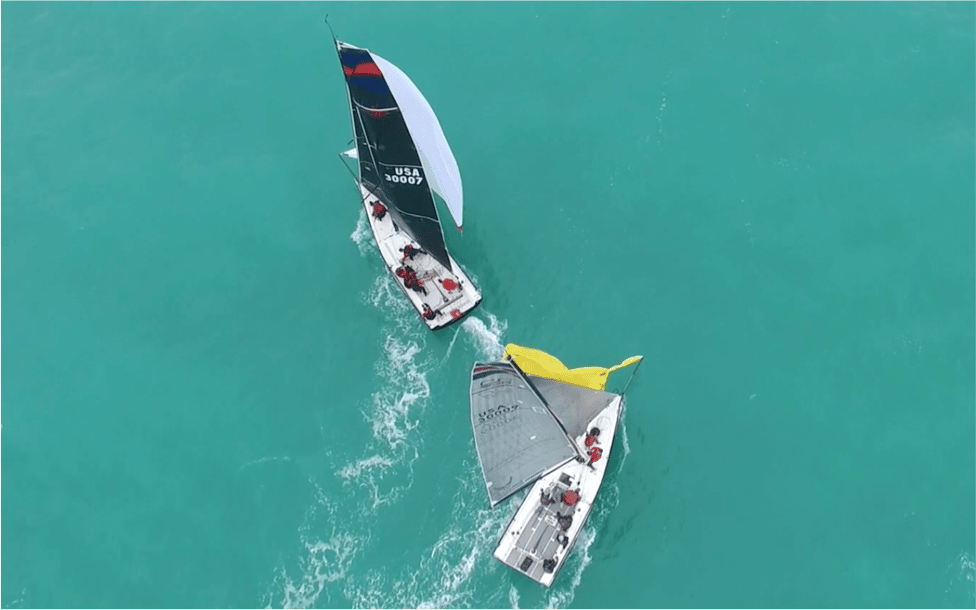
For the normal set, you know you nailed the turn when the kite fills easily, adding power instantly, but without feeling like you are at risk of broaching. This also gives your team a chance to get into their longer-term positions so you can find your optimum speed (photo 3).
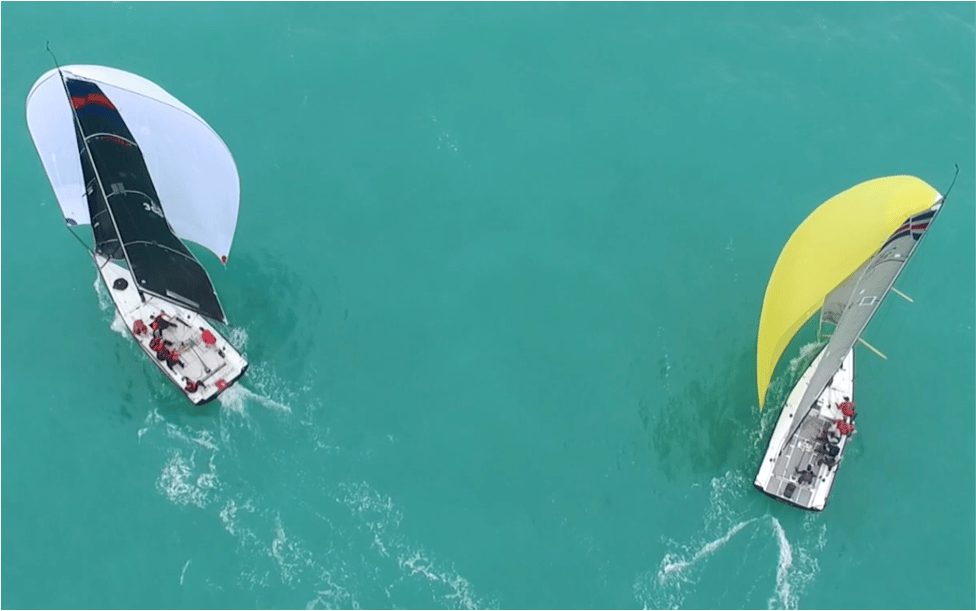
Photo 4 shows team members settling into their spots to make the boat go fast. Time will tell which one chose the correct, tactical option. For now, we can see that the trailing boat has gained a length or more on the leader, but the leader will be on starboard when they meet again. You will spend some distance to do an “Indian” set, but if your team can nail it like this one did, you can be confident to make it happen when conditions require it.
A couple of final thoughts about both of these maneuvers:
Plan ahead and let your team know what you’re thinking. The more time they have to understand the next move, the more likely it will go well.
Leave an option to change the plan. We generally have a percentage call on how likely it is that we will do either move. But the team knows that it can always change.
AdvertisementPractice. Yeah, do that . . . it’s important.
Have a spotter. We always designate a team member to tell us what the boats near us are doing. Often we have a “what-if” plan in place so everyone knows what we’re doing based on whether the other boat is doing “X” or “Y”. The spotter calls out the other boat’s plan, if it can be determined, and then we know our options. This is another reason not to pull the kite clew around the headstay too early, as it tells other teams what you are doing.
Watch and learn. Take time to watch how other teams do things. That perspective can shine a light or areas of risk and show you different ways to get the job done. The more you know, the better you can be.
Relax. When you’ve thought things through, practiced well and communicated the plan you can execute your maneuvers with confidence.









